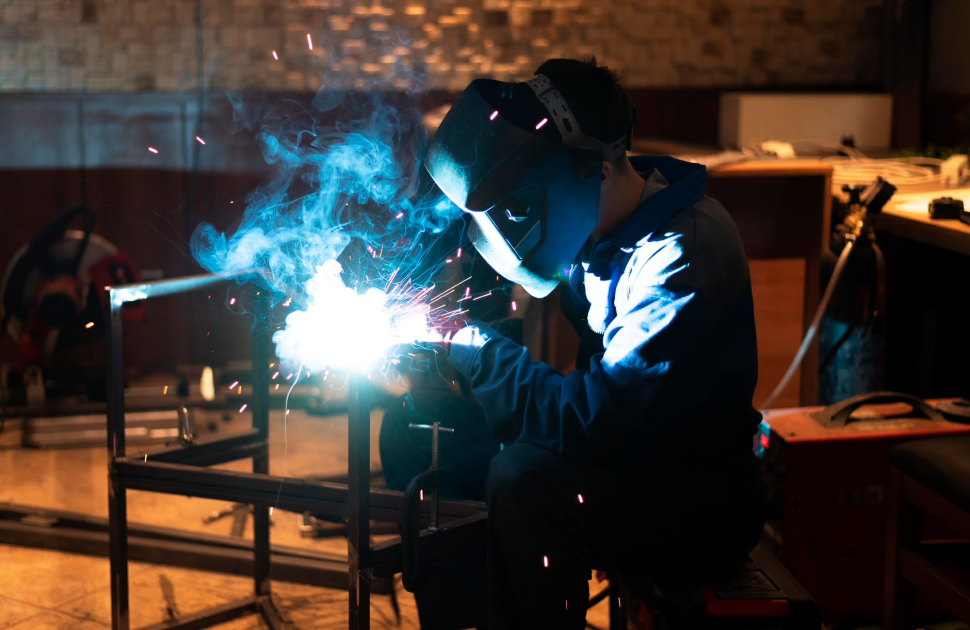Welding is a critical process that requires high accuracy and attention to detail.
Welding defects can lead to safety issues and decreased productivity, which can be costly in various industries.
To ensure the quality of welded components, Non-destructive Testing (NDT) methods are applied to detect and evaluate welding defects.
In this article, we will discuss the different NDT methods that are commonly used to detect welding defects.
Visual Inspection
Visual Inspection is the most Basic NDT Method used for the detection of welding defects.
It involves a thorough visual examination of the weld to determine if any defects are present.
This method is used to identify defects such as porosity, undercutting, and lack of fusion, which can be easily detected by the naked eye.
Visual Inspection is a quick and cost-effective method, but it requires a skilled inspector to identify defects accurately.
Liquid Penetrant Testing
Liquid Penetrant Testing (LPT) is a widely used NDT method for detecting surface-breaking defects in welding.
The process involves applying a liquid penetrant to the surface of the weld, allowing it to penetrate the surface defect, and then wiping it off.
The penetrant highlights any defects on the surface by remaining in the imperfections after the excess penetrant is removed.
This method is useful for detecting surface-breaking defects, such as cracks, porosity, and lack of fusion.
Magnetic Particle Testing
Magnetic Particle Testing (MPT) is another commonly used NDT method for detecting surface-breaking defects in welding.
This method involves applying a magnetic field to the surface of the weld and then applying a ferromagnetic material such as iron oxide.
Any defects present will disrupt the magnetic field, causing the ferromagnetic material to gather and form a visible indication of the defect.
MPT is used to detect defects such as cracks, lack of fusion, and porosity.
Ultrasonic Testing
Ultrasonic Testing (UT) is a widely used NDT method for detecting internal and external defects in welding.
The process involves using high-frequency sound waves to detect any flaws present in the weld.
An Ultrasonic Transducer is placed on the surface of the weld, and a sound wave is sent through the material.
If any flaws are present, the sound waves will be reflected back to the transducer, creating a visual representation of the flaw on a screen. UT is used to detect defects such as cracks, porosity, and lack of fusion.
Radiographic Testing
Radiographic Testing (RT) is an NDT method that uses X-rays or gamma rays to create an image of the weld.
The process involves placing a film or detector on one side of the weld and an X-ray source or gamma-ray source on the other side.
The rays penetrate the weld and create an image of the weld on the film or detector. RT is used to detect defects such as porosity, lack of fusion, and cracks.
Eddy Current Testing
Eddy Current Testing (ECT) is an NDT method that is commonly used to detect surface and sub-surface defects in welding.
The process involves using a coil to generate an alternating magnetic field, which induces eddy currents in the material being tested.
Any changes in the material, such as defects, will cause a change in the eddy currents, which can be detected by the coil.
ECT is used to detect defects such as cracks, porosity, and lack of fusion.
In conclusion, Non-destructive Testing (NDT) methods are crucial in detecting welding defects, as they allow for the detection of defects that may not be visible to the naked eye.
The three most common NDT Methods used in welding defect detection are magnetic particle testing (MT), liquid penetrant testing (PT), and ultrasonic testing (UT).
Each of these methods has its own advantages and limitations, and the selection of a particular method depends on the type of welding, the type of material, the size and location of the defects, and the level of sensitivity required.
By using NDT methods for welding inspection, welders can ensure that their welds meet the required standards, resulting in safe and reliable structures that can withstand the test of time.

.png)








